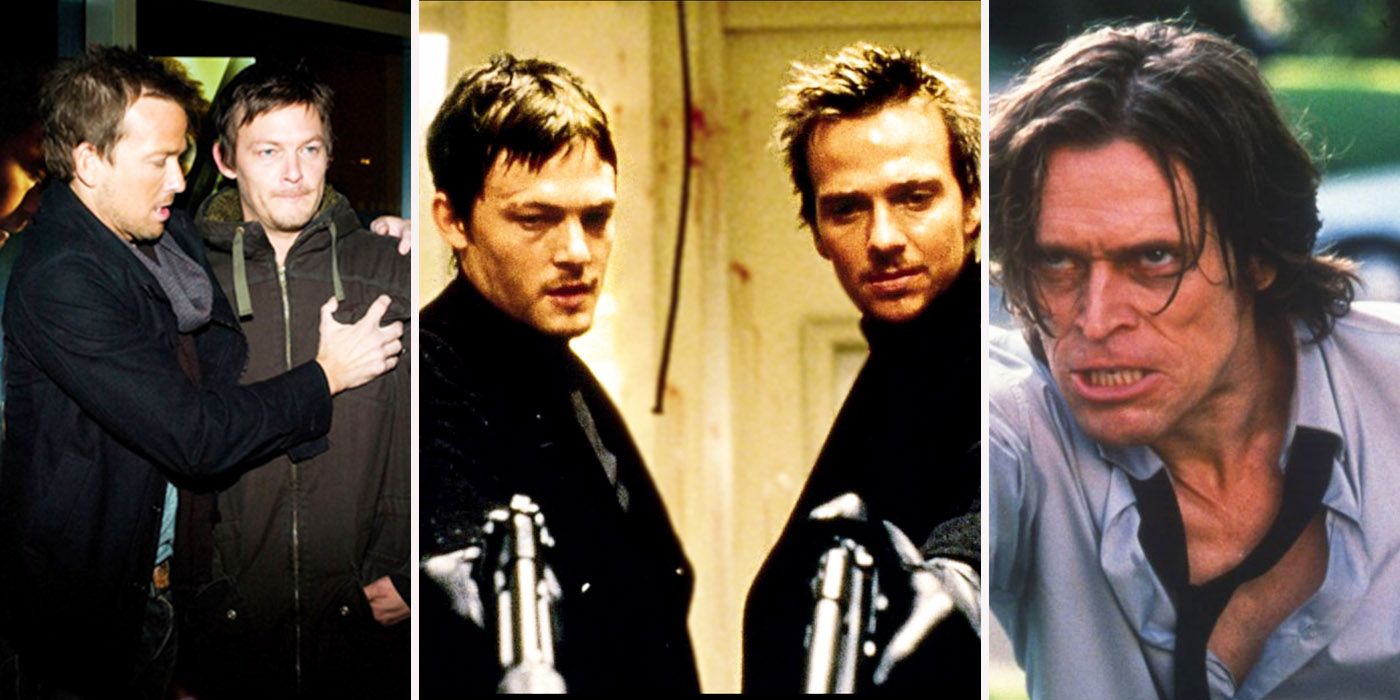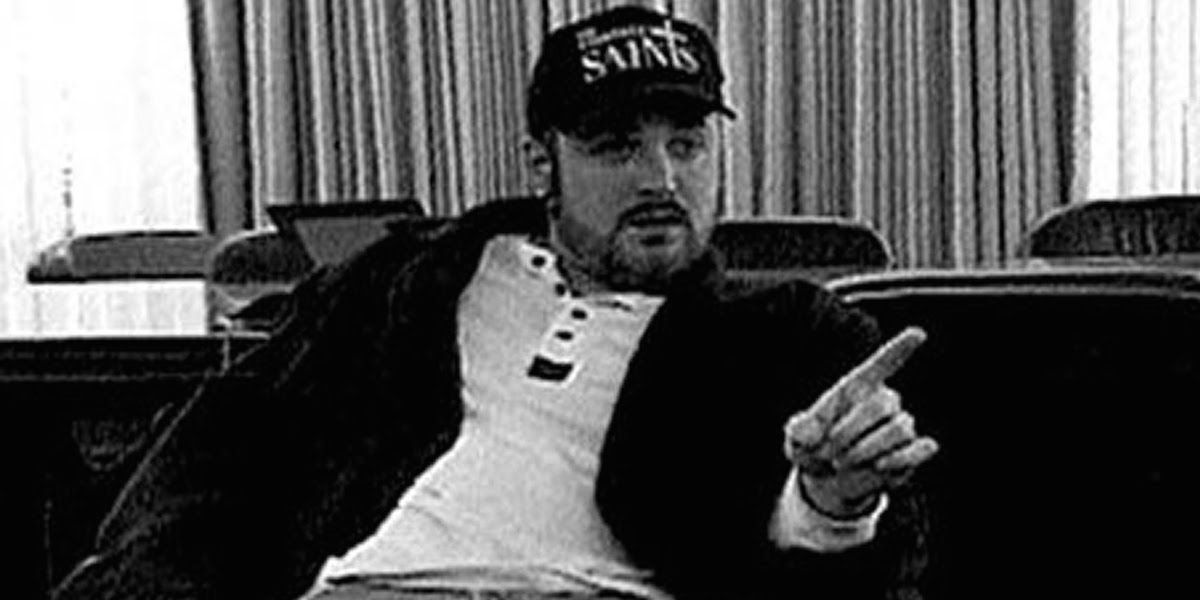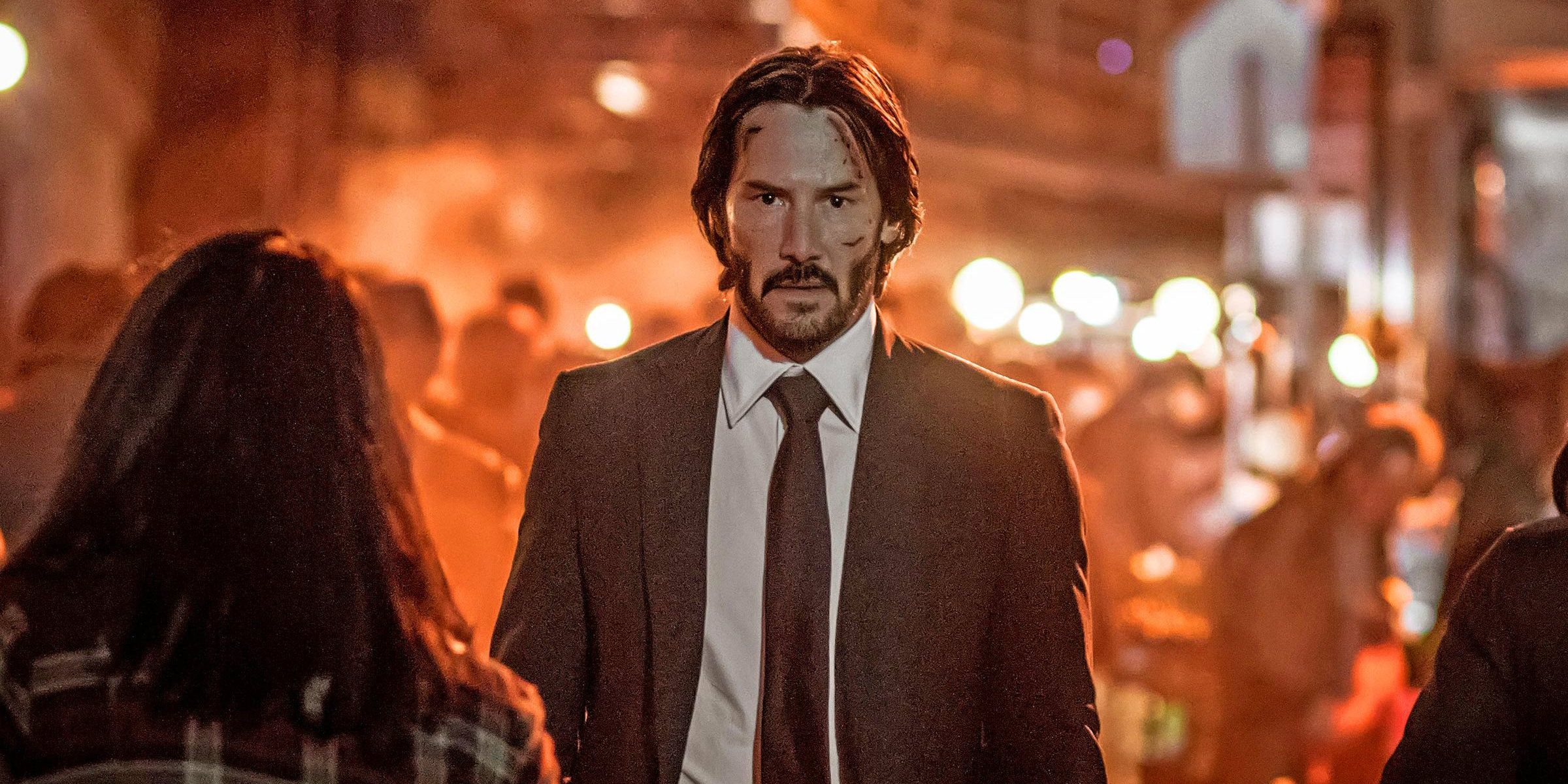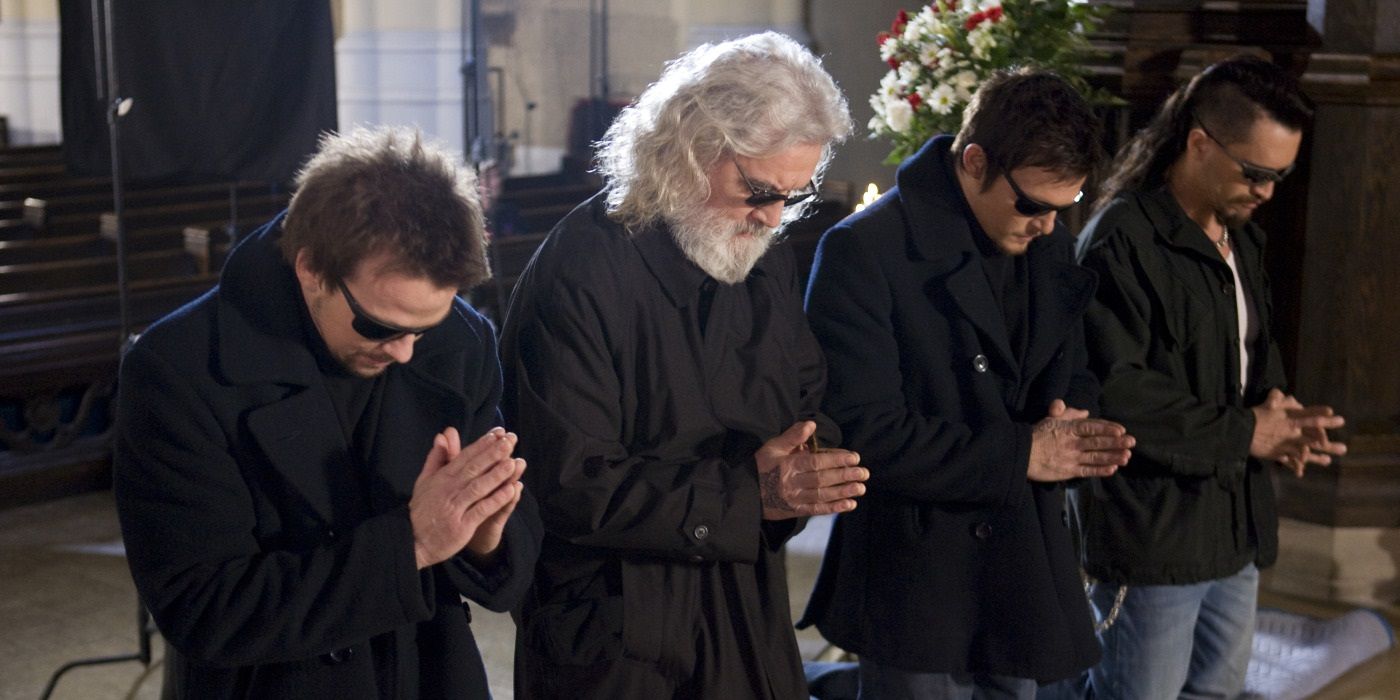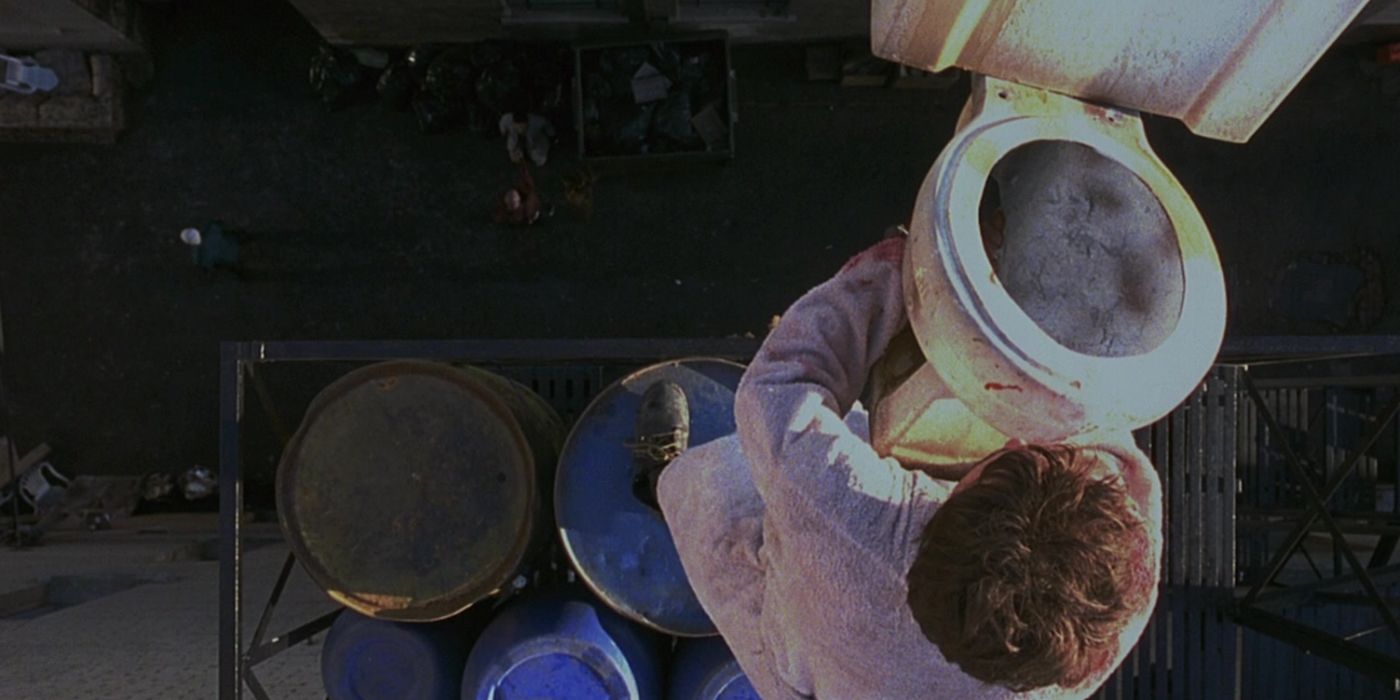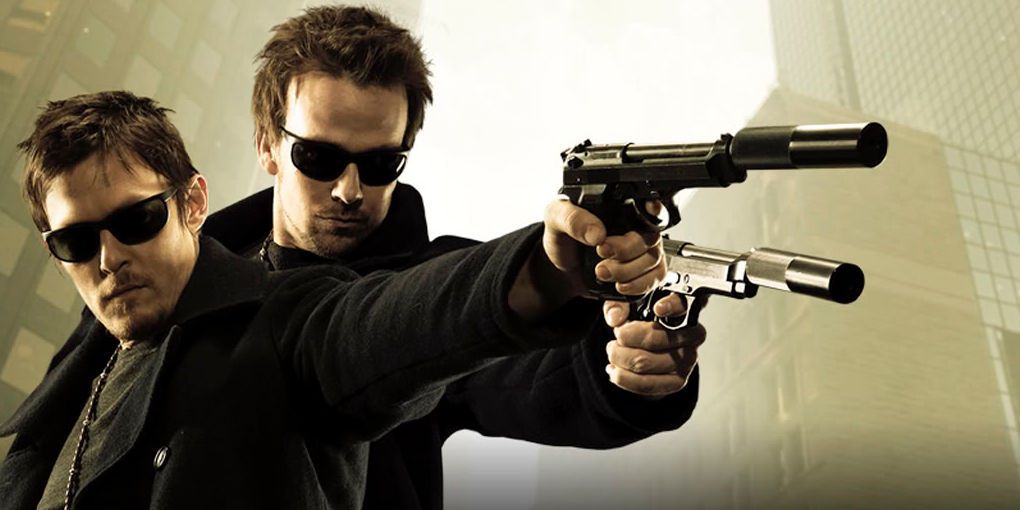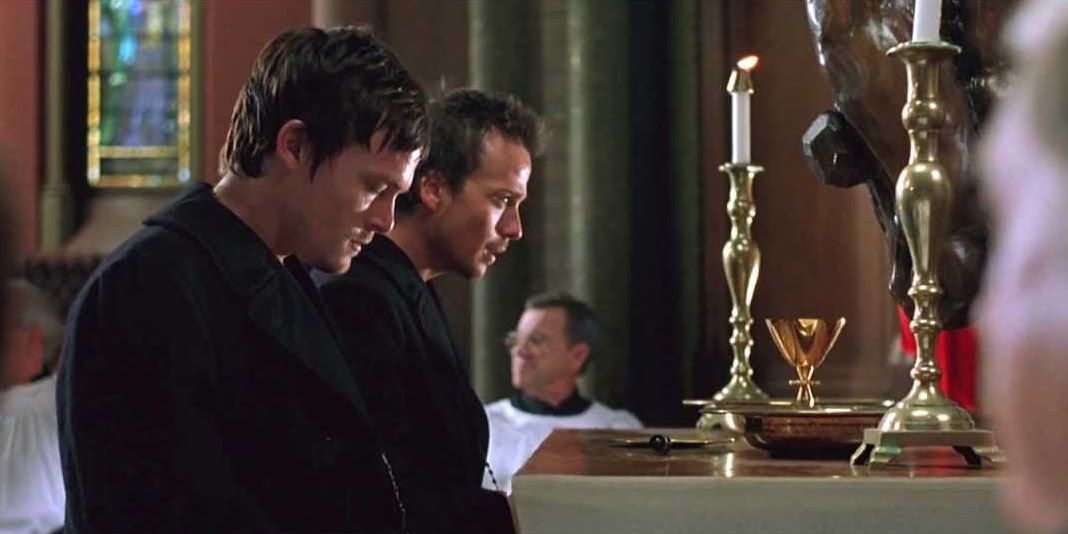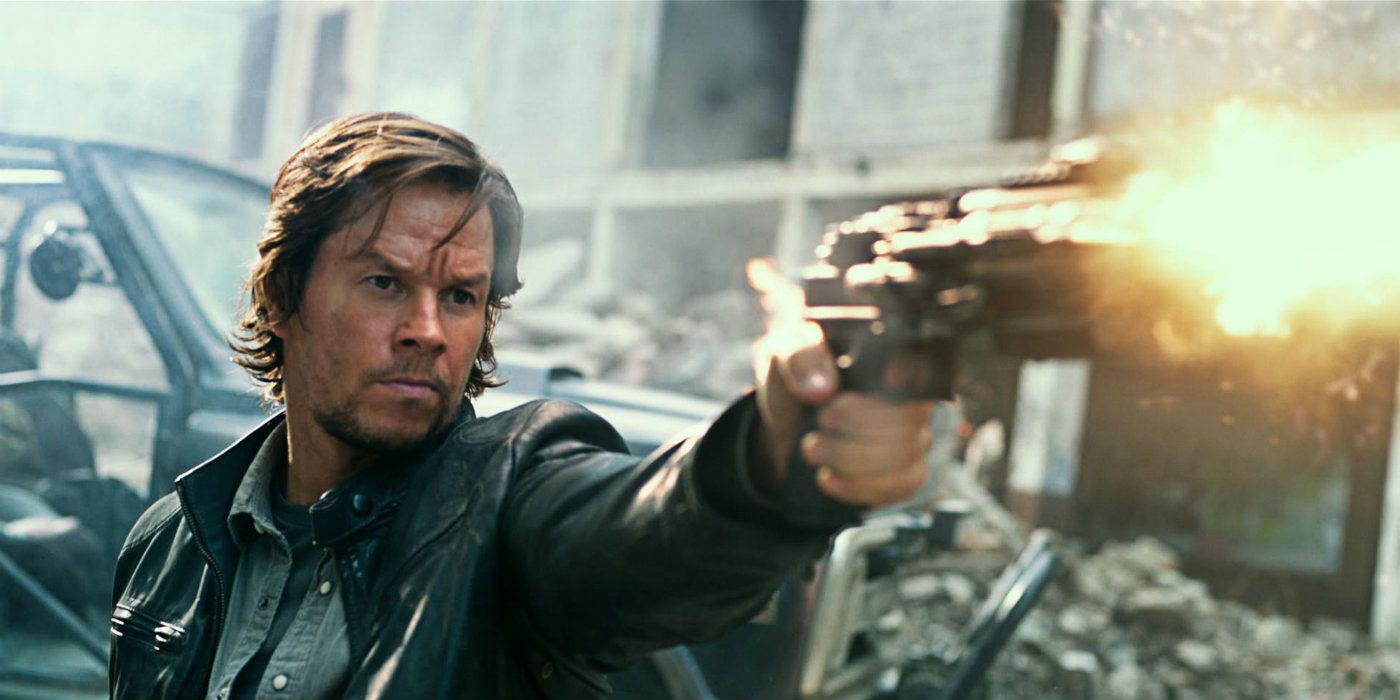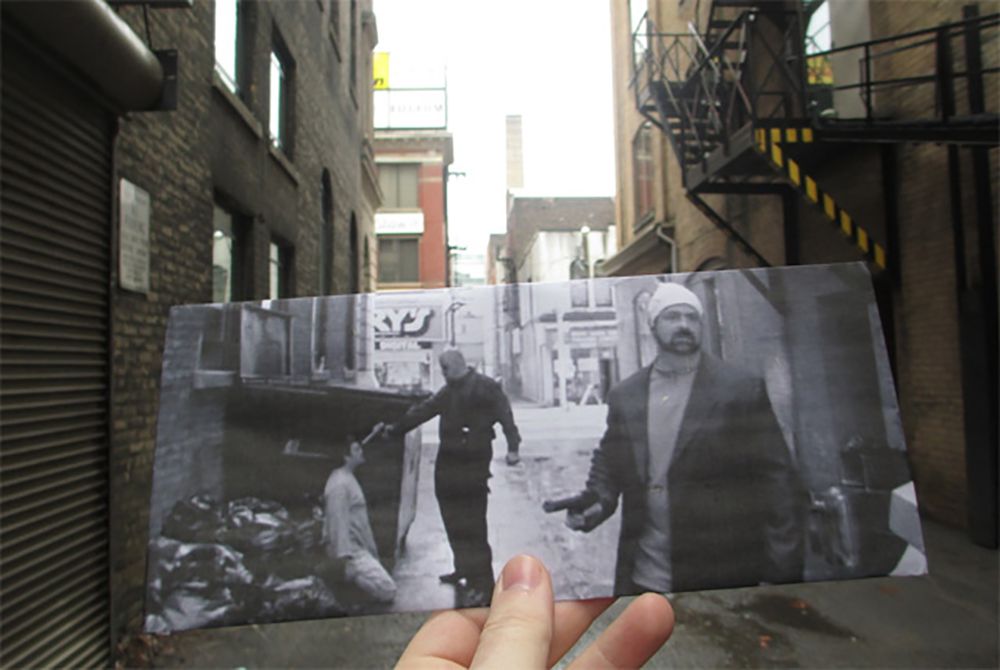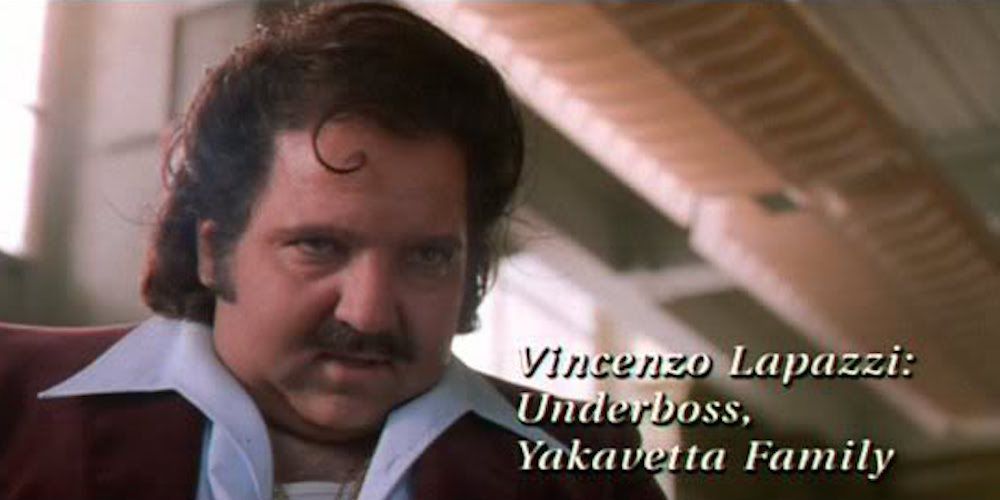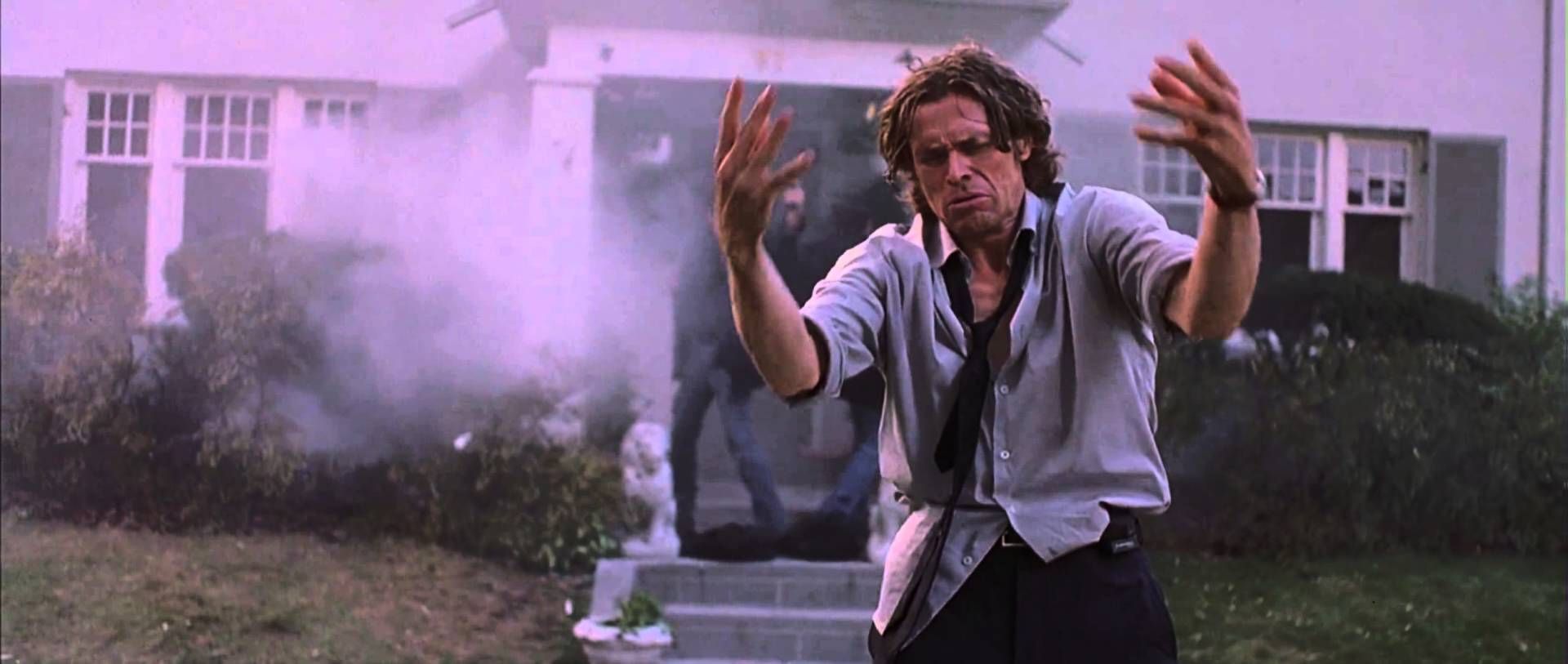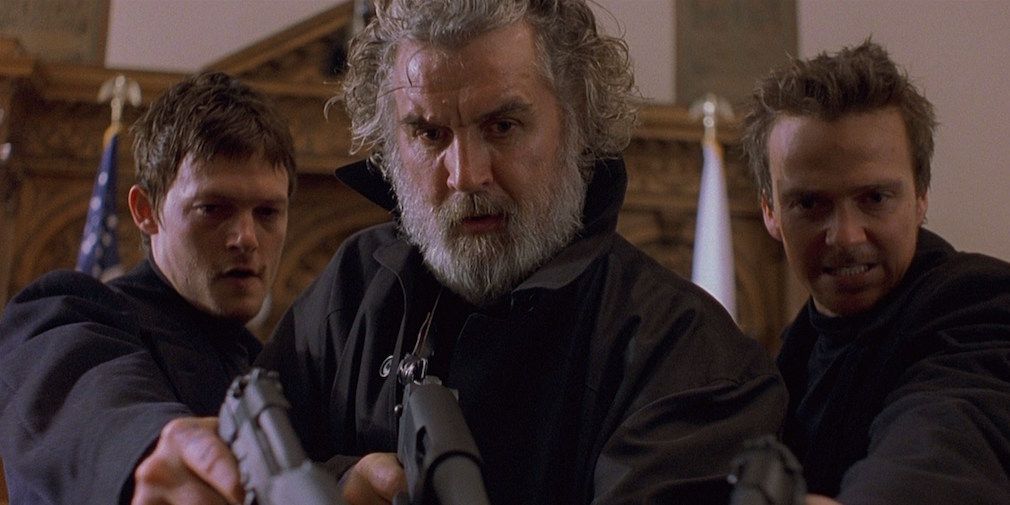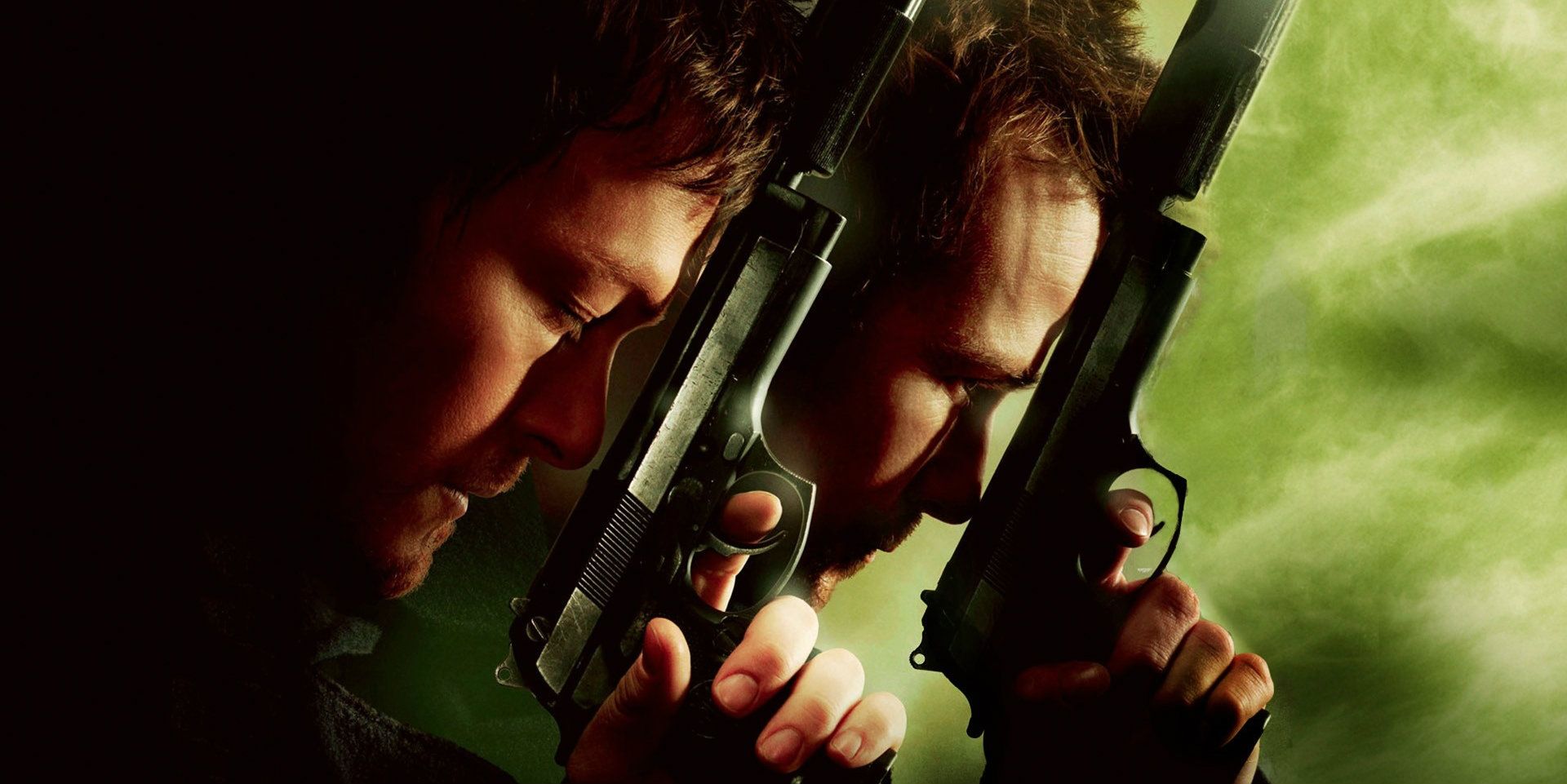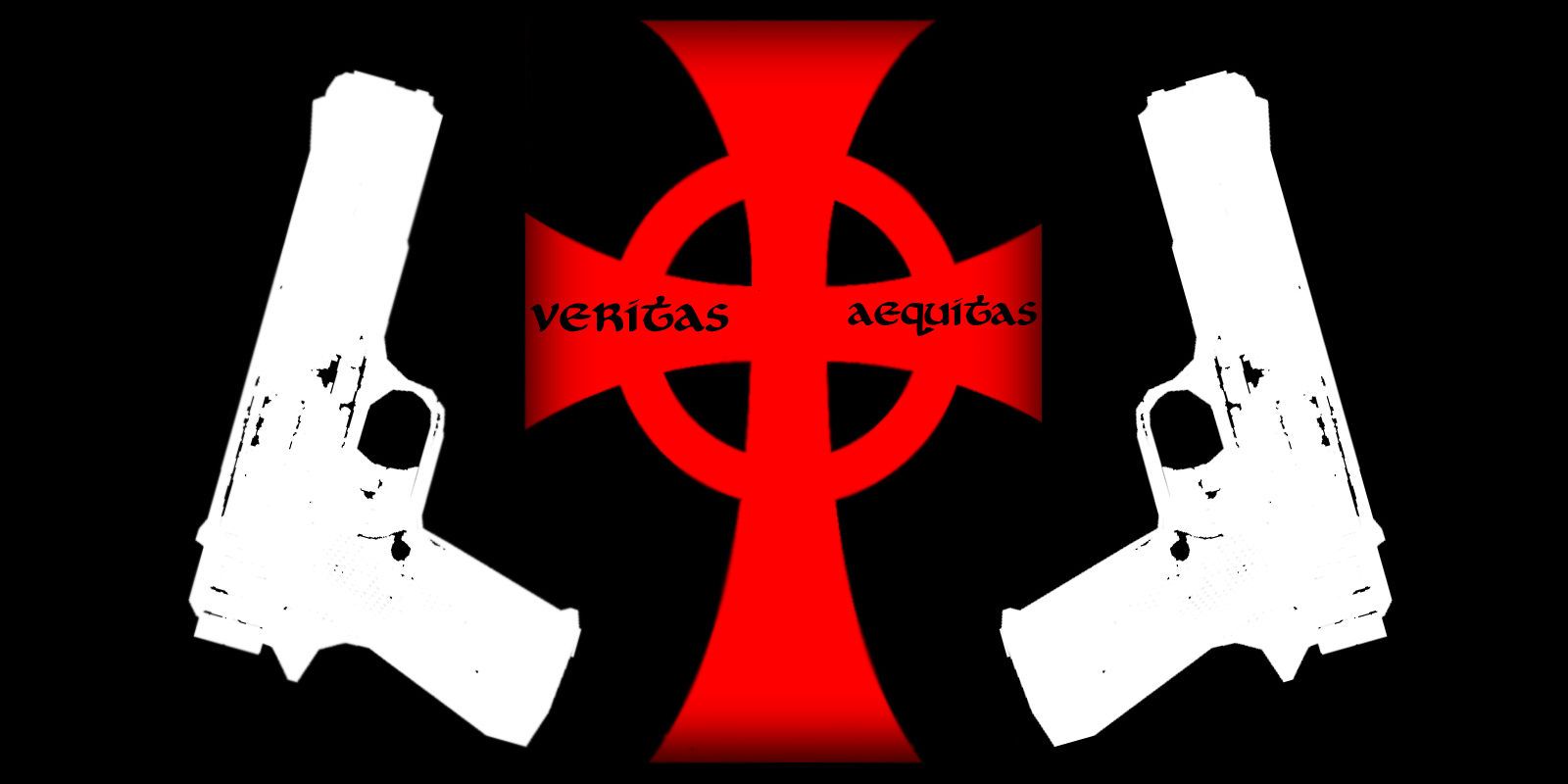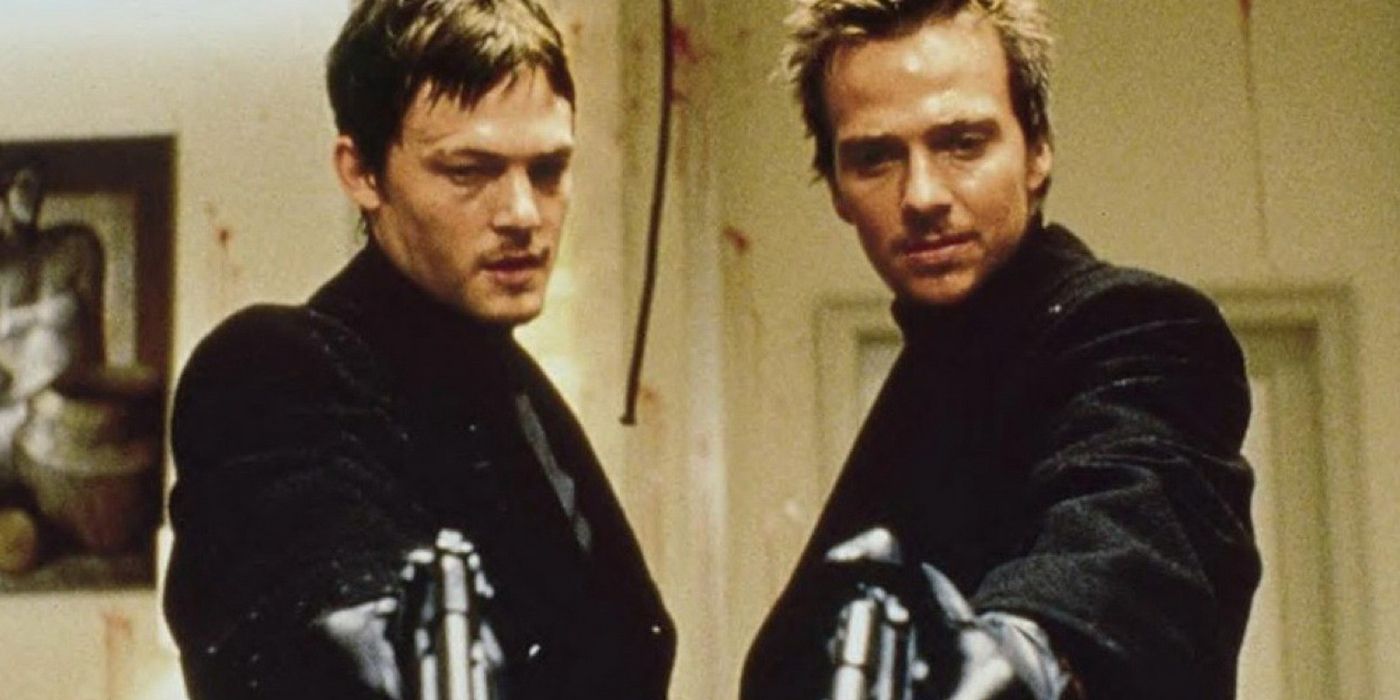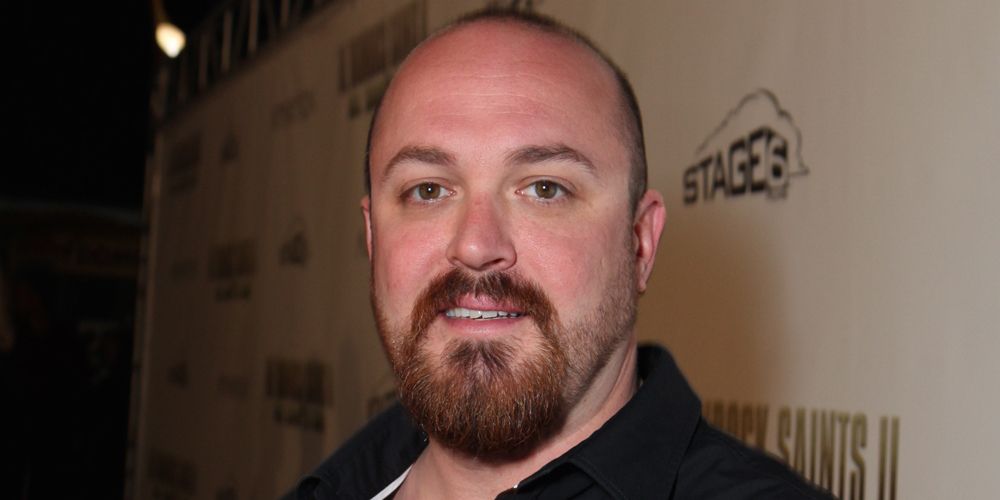The Boondock Saints is a genuine cult classic, a relic from a time when streaming services and devoted indie film companies couldn't be relied upon to save struggling independent films. The film follows the MacManus brothers, played by Sean Patrick Flanery and Norman Reedus, who go on what they see as a holy crusade to rid Boston of organized crime. On their tail is Agent Smecker (Willem Dafoe), who seems to be able to use forensics to see exactly what happened in each gun battle.
Overtly stylized and ideologically challenging, The Boondock Saints was the brainchild of Troy Duffy, a bartender with no prior filmmaking experience. Duffy appeared on talk shows and newspaper covers, as his rags-to-riches story entranced millions. Duffy wrote and directed the film and its sequel, All Saints Day, but he had his share of trials and tribulations along the way. The behind-the-scenes journey of The Boondock Saints was a wild one, as it included lawsuits, insults, broken friendships, and Harvey Weinstein. It may not have become the blockbuster smash hit Duffy envisioned, but the film's backstory is just as entertaining as the fictional crime story itself.
Here are 16 Secrets You Didn't Know About The Boondock Saints.
The behind-the-scenes documentary is better than the actual movie
Troy Duffy’s rise into Hollywood stardom was so surprising that his friends Tony Montana and Mark Brian Smith started filming the behind-the-scenes action for a documentary. At first, Overnight (which was filmed over four years) presents the good times, Duffy and friends drinking in celebration with Hollywood power players. As it goes on and the development cycle gets more and more troubled, it becomes a picture of a rags-to-riches story gone wrong, of a man who couldn’t handle the fame and success of Hollywood.
Adding insult to injury for Duffy is that the documentary was actually critically acclaimed—much more so than The Boondock Saints or its sequel. While the two Boondock Saints movies are both in the 20s on Rotten Tomatoes, Overnight holds at a very respectable 78%. Critics, it would seem, are much more interested in the story behind the film than the film itself.
The director rejected Brad Pitt, Keanu Reeves, and Ethan Hawke
The casting process of The Boondock Saints was notoriously difficult, as Duffy clashed with producers over his vision for the characters. This included actors that Duffy rejected without ever meeting, based on his opinion of their previous work.
Reportedly, Duffy wouldn’t even consider Brad Pitt in any role, and Overnight captures him on a phone call with his casting agent, calling Keanu Reeves a “punk” and Ethan Hawke “a talentless fool.” Considering each of these actors’ impressive work in other action movies, it’s hard not to find fault with Duffy, a complete newcomer, for badmouthing established actors based on nothing but his own perception of their personalities.
On top of that, it’s easy to believe accounts of Duffy insulting his coworkers on set when there’s evidence of him insulting actors he never even met.
The macabre inspiration
In the mid-‘90s, Troy Duffy was a bouncer/bartender living in Los Angeles playing gigs with his rock band when he could. He had never written anything before coming to L.A. But that all changed when, according to Duffy, he saw a drug dealer in his apartment building taking money off of a deceased individual.
The sight of this sleazy act propelled Duffy into writing the screenplay which would eventually become The Boondock Saints. Set in his hometown of Boston, Duffy wrote a story about vigilantes cleaning up the streets. Obviously, the fantasy of dealing with criminals without involving the police engaged Duffy— and he knew the question of whether it was right to take out criminals would engage his potential audience.
Hollywood seemed to agree, as it wasn’t long before producers were knocking on his door.
Harvey Weinstein bought the director a bar
While producers courted Duffy for the rights to his script, Duffy made it clear he was only interested in working with people who went above and beyond. So, a little guy named Harvey Weinstein (you may have heard of him, he’s been in the news recently) not only promised Duffy at least $300,000 for the script and a $15 million production budget - he also bought the bar Duffy used to work for.
Weinstein then gave Duffy co-ownership of the bar (J. Sloan’s), which naturally made Duffy much more open to working with the producer. Duffy signed with Miramax, and then Weinstein proceeded to mostly ignore him during the development process. Their relationship eventually soured to the point that Miramax declined to produce the film, and Duffy suspects Weinstein actively sabotaged his career.
Filmmakers suspect Weinstein blacklisted the film
Part of what made Harvey Weinstein such a monster was his willingness to use his industry clout to harm the careers of those he didn’t like. This manifested most horribly in the tales of his harassment— actresses felt that if they didn’t comply with his wishes, he would end their careers. Indeed, several directors have corroborated such stories, saying the producer would actively threaten filmmakers who worked with actors and actresses he didn’t like.
It wouldn’t have been out of character for Weinstein to, as Duffy and his friends said, blacklist The Boondock Saints when it debuted at Cannes. Duffy was trying to find any distributor willing to sell the movie to theaters, and in the documentary Overnight he suspected Weinstein of telling them to stay away (which they did).
Nobody wanted to distribute it because of Columbine
Perhaps coupled with the efforts of Weinstein to stifle the film, distributors had one big reason to avoid The Boondock Saints: the Columbine High School incident. Occurring just a month before the film debuted at Cannes Film Festival, the school shooting shocked the nation.
The perpetrators of the crime, Eric Harris and Dylan Klebold, also happened to be a pair of white male shooters inflicting their worldview using firearms. This was a little too close to the fiction Duffy was selling, and distributors backed away from the film rather than tempt controversy.
This is nothing new to the entertainment industry, of course— with people in real life committing horrendous crimes with an array of firearms, it’s natural for companies to get skittish when dealing with fictionalized portrayals of gratuitous gun violence.
They were banned from filming in Catholic churches
The Boondock Saints centers on a pair of Irish Catholic brothers played by Sean Patrick Flanery and Norman Reedus. The MacManus brothers go on a vigilante crusade, thanks to shared revelation with heavy religious overtones. It follows that Catholicism would play a big role in the film.
Multiple scenes are set in churches, rosary beads and crucifixes are everywhere.
The thing is, the church that appears in the film is actually Lutheran, not Catholic. See, Catholic churches in the Boston area had heard about Duffy’s film, and the violent message contained within. To show their discontent with being associated with the film, Catholic churches in the area refused to allow Duffy to film on their premises. He ended up having to film in a Lutheran one: the Church of the Covenant.
Hollywood A-listers were interested… until they weren’t
When Duffy’s script was first discovered, it became a hot commodity very quickly. It may be difficult to believe now, but A-list actors were lining up around the block to work with the first-time director. At one point, Duffy would throw parties and meet with actors like Patrick Swayze, Ewan McGregor, Jeff Goldblum, and Mark Wahlberg.
As fans of the movie are no doubt aware, not one of those actors actually appear in The Boondock Saints. Despite meeting with all of these actors, they dropped out for a variety of reasons— filming conflicted with Wahlberg’s role in Boogie Nights, Swayze and Goldblum passed, and McGregor turned down the role after Duffy showed up to a meeting drunk and incoherent.
Fans of the film are likely happy with the actors who ended up starring in the film, but it’s hard not to imagine the movie that could have been if Duffy had managed to hire these stars.
Most of the movie wasn’t actually shot in Boston
The entire plot of The Boondock Saints is set in Boston, Troy Duffy’s hometown. While plenty exterior shots were filmed in Boston, it’s not the friendliest town when it comes to tax credits for film production companies.
Working on a shoestring budget, Duffy and his crew shot several scenes on sets and in the city of Toronto.
Occasionally, they made mistakes that made it clear they could only be shooting in Canada. For instance, some chain stores (like Henry’s) show up in the background of certain shots—and these stores were only active in Canada at the time.
Filmmakers have always been good at making Canadian cities seem like American cities in the background, so luckily for the viewers, none of the shots really seem out-of place. It’s still odd to think that a movie so thoroughly Bostonian in spirit filmed sequences hundreds of miles away.
An adult cameo
Ron Jeremy has appeared in thousands of movies, making him a veteran actor—an adult film actor, that is. But among his film credits are plenty of mainstream movies, one of which is The Boondock Saints.
In the film, he plays Vincenzo Lipazzi, the right-hand man to the head of the Yakavetta crime family.
Not much is known about exactly why Jeremy makes the cameo, but he remarked that working with Duffy was interesting because the director was so decisive and sure of what he wanted. Also, co-star Sean Patrick Flanery says that Jeremy made a mold of his (famously large) member and gave it to Flanery as a gift to mark the end of shooting. The inscription? “Keep up the hard work.”
Billy Connolly said he was tired of Willem Dafoe’s “tantrums”
The documentary Overnight also captures some limited behind-the-scenes footage on set of The Boondock Saints. One such moment is actor Billy Connolly (who plays Il Duce in the film) joking around with his Duffy, his director. At one point in the conversation, Connolly brings up fellow actor Willem Dafoe, and rants about how he doesn’t like Dafoe’s attitude, his “tantrums,” and even his hair.
Granted, this could all be in jest, as Connolly definitely plays up his comments for laughs (including the part where he jocularly says what Dafoe needs is to get smacked a couple times). But it still points to an uneasy working atmosphere. Given Duffy’s reputation, it wouldn’t be too difficult to infer that he operated a hostile work environment.
The film owes all its popularity to Blockbuster Video
After distributors passed on the film, The Boondock Saints secured a theatrical run in just five theaters in Boston for one week. After that theatrical run, it seemed as though that would be the end for the film - that is, until Blockbuster got involved.
Blockbuster Video took a chance on The Boondock Saints, booking the exclusive rights to the video rentals for the film. Banking on the sensational news stories that accompanied Duffy’s rags-to-riches tale to get customer interested, Blockbuster made the film available in stores across America.
Then, through word of mouth, The Boondock Saints’ popularity grew until it became a bonafide cult hit. Before Blockbuster got involved, the filmmakers had no way of getting their film out— but once it did, the film became their highest-grossing release in its first six months.
The failed sequel
While the critical reception between The Boondock Saints and The Boondock Saints II: All Saints Day was relatively static, with each receiving negative reviews, the audience reception was definitely not.
The audience score on Rotten Tomatoes is a whopping 91% percent positive, suggesting an avid, widespread fanbase. The audience score on the second movie is considerably lower, scoring just 58%.
That’s a significant drop, and it shows fans weren’t impressed by Duffy’s sophomore effort.
The sequel had a much easier development cycle, a higher budget, and less on-set tension, yet fans don’t like it as much. It could suggest that part of what drew fans to the original was its obscure, cult status and wild behind-the-scenes stories— or perhaps that they had even outgrown Duffy’s brand of implausible, stylized shoot-ups.
A prequel TV show
Rumblings of another Boondock Saints sequel have been around pretty much since All Saints Day released. When asked, Duffy’s stock answer seems to always be that he’s working on the script for the third movie. But in 2017, news of a different kind of continuation to the franchise broke: Supposedly, Boondock Saints: Origins was in development, a television series based on the two films.
News sites feasted on this announced for a few days back in April, but there hasn’t been much noise since. A website was launched at the same time the announcement was made, selling merchandise, DVDs, and behind-the-scenes looks for exorbitant prices. This website now appears to be inactive, and no further news of the show has come out.
Troy Duffy had to sue the production companies to make the sequel
Despite finally finding success with Blockbuster, Duffy had one more obstacle to hurdle: Duffy received no money from the film’s video royalties.
Years after the film’s release, Duffy hired a legal team to sue Franchise Pictures (and a pack of several other companies) for both financial compensation and the rights to the film itself.
The film companies settled, and not only did Duffy and co. receive the money they wanted, they also got the rights to the film back— meaning they could finally make a sequel. Just a little while later, 20th Century Fox announced it would finance The Boondock Saints II: All Saints Day.
While the movie was by no means a box office smash, it was finally the cinematic debut Duffy had dreamed of for his first film.
Troy Duffy alienated loved ones after getting a movie deal
Troy Duffy was completely new to the movie industry. He had never written or directed a film before receiving complete control of The Boondock Saints. Fame and riches gained that quickly have a funny way of magnifying a person’s faults, and you can see Duffy’s on full display in the aforementioned documentary Overnight.
Duffy’s coworkers were less than impressed by his professional conduct. There are sequences in the documentary where he repeatedly says his family and friends are jealous of him. Even Duffy’s band (The Brood) fell apart. The Brood changed its name to The Boondock Saints after getting hired to make the soundtrack for the film, but as Overnight chronicled, they disbanded after getting dropped by their record label— amidst several fights between Duffy, his bandmates, and the band’s managers.
---
Do you have other The Boondock Saints trivia to share? Leave it in the comments!

